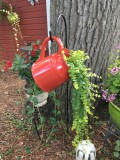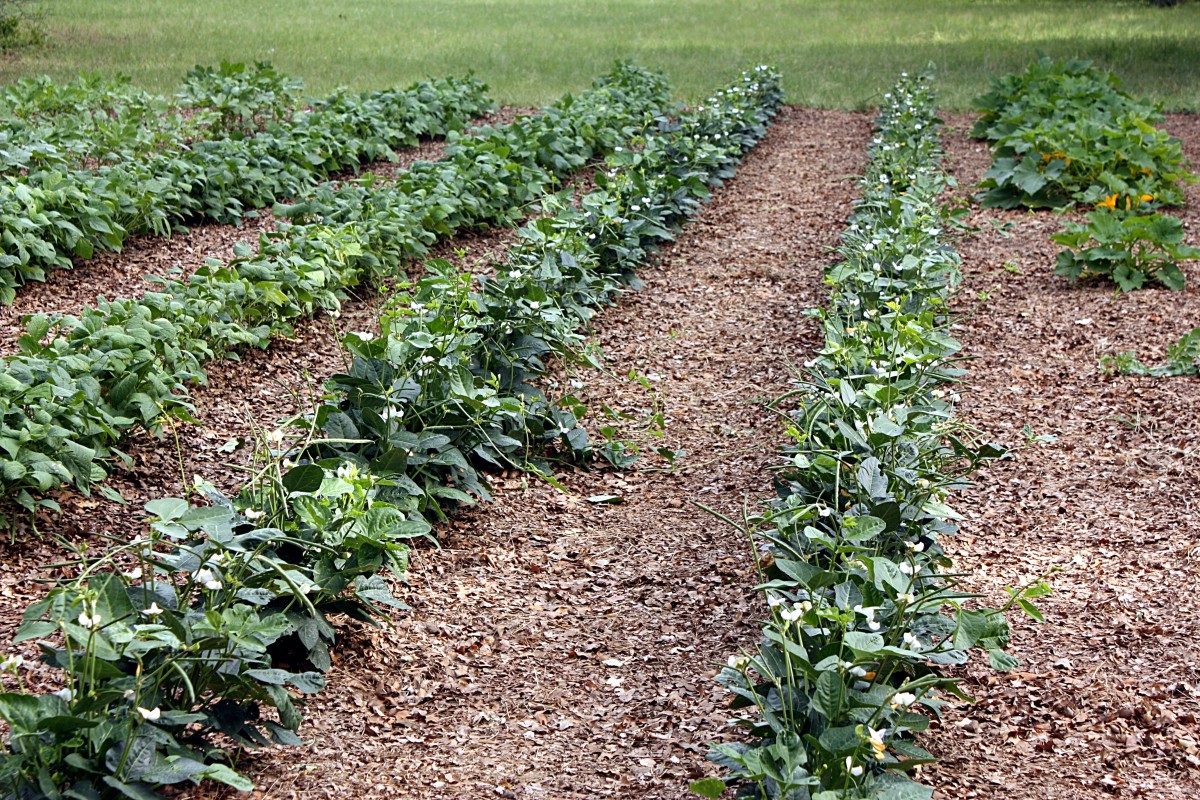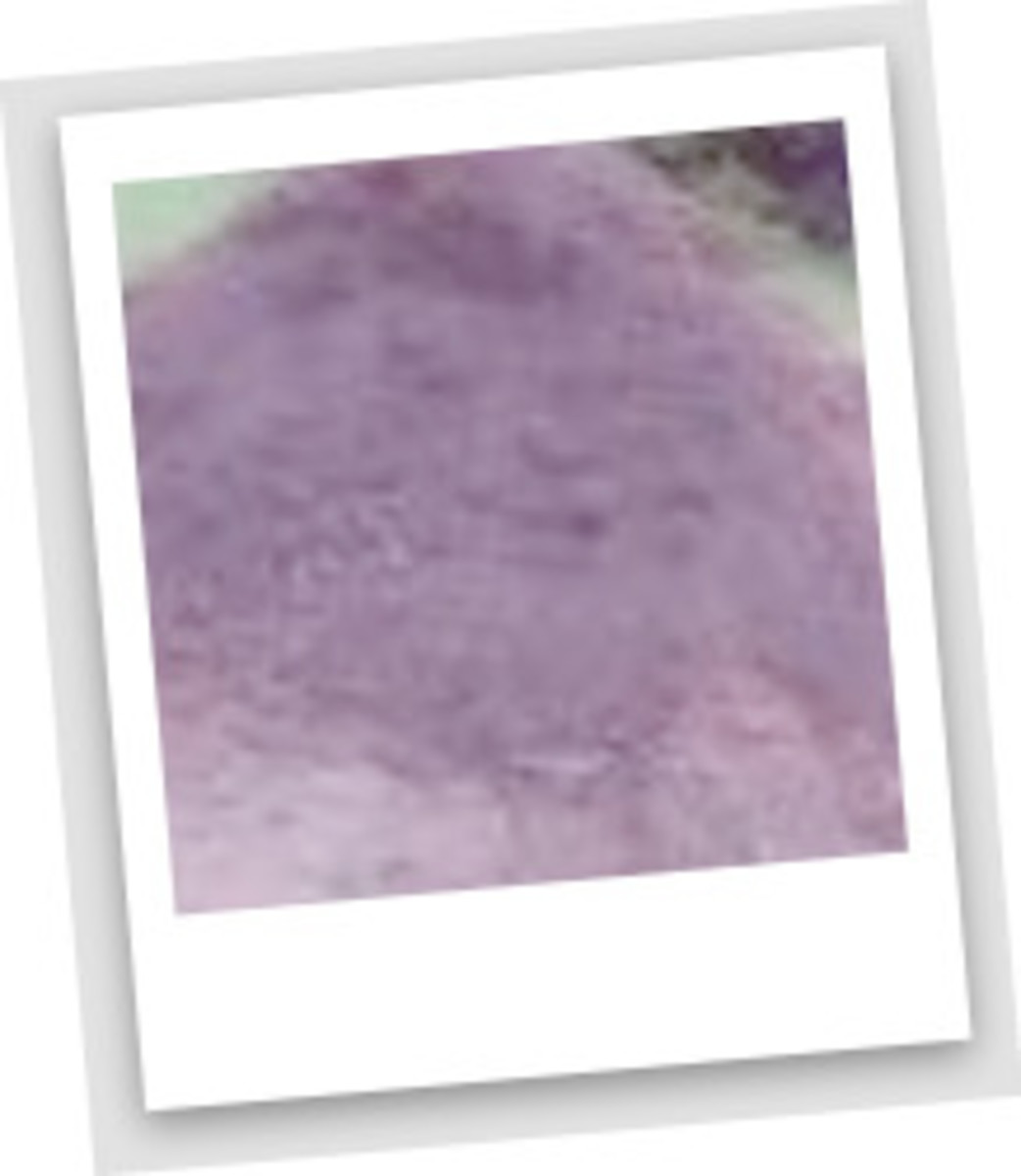Growing Vegetables and Fruit
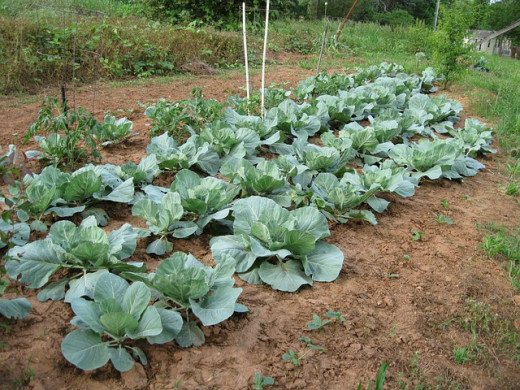
Growing Vegetables is very popular
There is no more satisfaction than having your own garden and orchard around your home. This love of plants and gardens has been handed down through the generation and today there is more interest than ever in gardening. Whether your garden is a tiny window box in a flat or an extensive area of lawns and shrub borders, the satisfaction obtained from growing one's own plants is immense.
The interest in home-grown produce increases as we become more aware of the importance of good wholesome food in our diets. The high cost of living is an incentive to grow one's own, and the savings to be made by carefully managing a vegetable plot are very worthwhile. I have been growing vegetables and fruit for my family in New Zealand for fifty years, and enjoy every minute of it. I use organic ways as I am a farmer's wife, manure and a compost bin is readily available if you use all wastes and lawn clipping wisely.
10 Ways to Make your Vegetable Garden More Productive in 2017
Urban Vegetable Garden

Preparation of Soil for Growing a Garden
Use all household wastes for compost (Humus)
Use household wastes like vegetable tops, fruit peelings, tea leaves, egg shells, and a whole lot more can be added to compost, making good HUMUS for growing Vegetables and good healthy Fruit Trees that fruit well.
PREPARATION OF SOIL
A fertile soil contains all the ingredients a plant needs for healthy growth.
The ideal garden soil will comprise a balanced mixture of sand, clay, and humus.
- SAND is a valuable component of a fertile soil, it makes the soil more crumbly, aiding aeration and root growth.
- CLAY is also a valuable component for fertile soils because it is usually well supplied with plant foods. Clay soil also holds on to moisture longer in dry conditions.
- Pure sand or pure clay will support little plant life. Both components are needed, together with hummus, for a balanced soil.
- Clay dominant soil will be much improved by the addition of coarse sand while pulverized clay, thoroughly mixed with sand, will go far towards providing a healthy rotting medium.
- HUMUS, the third major component, is needed before a garden will flourish.
Humus is the term used to describe any well-decayed organic matter. It may come from a variety of sources, leaves, animal manure and peat is examples of substances that will decompose to form humus. The ideal gardening soil is a balance loam. It should be a mixture of equal parts of sand and clay, and plenty of humus. But the soil must also satisfy one other very important requirement, it must be neither acid nor too alkaline.
Most garden vegetables, ornamentals, and fruit trees do best in soil that is either neutral - midway between acid and alkaline or slightly acid. A scale called the pH scale has been developed to assign the degree of soil acidity or alkalinity. The best garden soil will have a pH of between 6.5 and 7.
Generally speaking, trouble starts if the pH drops below 5.5 or rises above 8. Below the 5.5 level, soils become too acid, undesirable organisms thrive and many crops grow only in a stunted fashion. Acid soils can be corrected by dressing with lime or dolomite. Clay soils which are acid can be dramatically improved by liming. In addition to lowering the acidity of such soils, lime improves their physical state as well, when added to clay, lime causes the minute clay particles to group together into 'crumbs'. These larger particles are held together by the surface tension of water, as are the fine particles. So a clay soil treated with lime becomes more crumbly and easier to work.
Plant disorders can also appear if the soil pH is above the 8.0 level, some vital trace elements become locked up or are wasted. If you want a good, all-round growth in your vegetable garden, one of the first things to do is access the pH level of the soil.
SOIL TESTING KITS available at garden centers provide a rough guide and should reveal any serious imbalance. For greater accuracy, several samples should be taken from different parts of the garden.
Growing Vegetable Seed
What Vegetable Seeds do you plant?
Organic Gardening - grow your own food
Peter Kearney introduces you to the organic and biodynamic gardening educational services of his company City food Growers at www.cityfoodgrowers.com.
Extensive organic gardening content on vegetables, fruit trees, herbs and grains, which can all be localised online to your climate for every town and city of Australia, USA and New Zealand. Organic and biodynamic gardening workshops and urban agriculture consulting services in Australia, plus online organic gardening educational content for schools in Australia, New Zealand and USA.
Growing Vegetables
Gardening for a great vegetable garden is the same anywhere in the world, in most cases with good rich soil, they will grow the only difference is, selecting the best varieties of seeds and plants for each season, so you can master the art of succession planting, and maximizing the use of space throughout the year to increase production.
Happy Gardening!
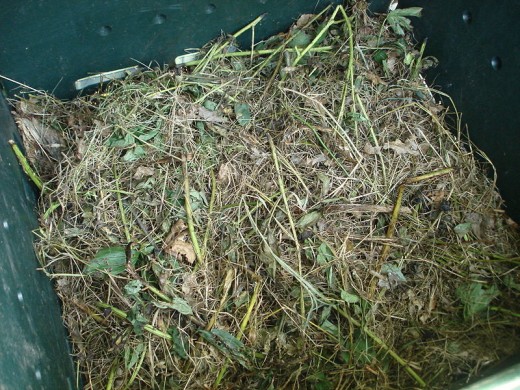
It Is Easy to Make Your Own Compost
Compost is the material that results from the storage and decomposition of animal and vegetable wastes. Many gardens and household wastes that are often burnt or sent to the local rubbish tip can be composted and returned to the soil as rich organic material. Household wastes such as vegetable tops, fruit peelings, tea leaves, egg shells, even vacuum cleanings can be added to the compost bin.
Garden leaves and lawn clippings are ideal, and material such as old straw, feathers, wood ashes (from untreated wood) , old sacks, rags, newspapers, flowerheads, even weeds which are not in seed can be added.
Seaweed is also a beneficial ingredient. Deep litter fowl manure is an ideal activator for compost. Never add perennial weeds such as couch, oxalis to the compost.
As the compost is made, a shovelful of animal manure, spread over the heap, is added every 150mm in depth of the compost. If no animal manure is available, sulphate of ammonia or blood and bone can be used as an activator instead.
Water the ingredients well as they are added to the heap, but do not over water to the extent of making the mixture waterlogged.
Vegetable Garden
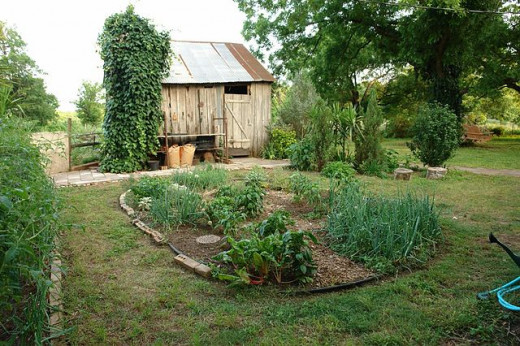
Feeding The Soil
Fertile soils contain enough plant food in suitable form for immediate use. They also hold considerable reserves of essential chemicals which in time will be made available by the action of soil inhabitants like worms and bacteria. The gardener's task is to supplement those natural supplies of essential chemicals and balance them where some components are either dominant or lacking. Because the nutrient requirement of various crops tends to vary a good deal, the gardener must also take into account the crops to be grown.
Some plant foods are available almost immediately for absorption by the roots. Others have to be broken down in the soil over a lengthy period. For example, sulphate of ammonia shows its effect on plant foliage within a week. But bonemeal a favorite phosphatic fertilizer for generations of gardeners liberates its phosphorus slowly over a long period.
Fertilizers should be used in conjunction with organic manures and must be used carefully.
Heavy handed application of fertilizers is more likely to damage plants than to encourage strong healthy growth. The elements that are usually deficient in soils are nitrogen, phosphorus, potassium, calcium, and sometimes magnesium.
Except for calcium, these elements are supplied by using a complete inorganic fertilizer or N.P.K. fertilizer, (the letters stand for nitrogen, phosphorus, potassium). An N.P.K. ratio, indicating the proportion of each element, is usually printed on the label.
Choosing a fertilizer for a particular crop is made easier with the knowledge that nitrogen produces leaf growth, phosphorus encourages fruit and flowers as well as root growth, while potassium is necessary to strengthen plant tissues and harden growth against disease and cold. Application of fertilizers in balanced proportions is essential. Excess nitrogen can cause a potassium deficiency which can only be corrected by a corresponding increase in potash application.
Also, a lack of one element can affect the ability of plants to take up other elements. The effect involved in bringing a garden soil to peak condition is made worthwhile by the better crops of both flowers and vegetables that are produced. However, the addition of fertilizers and organic material is a task that must be carried out regularly, particularly in the vegetable garden.
My organic vegetable garden + some tips for growing your own food!
Home Orchards
HOME ORCHARDS
Even small home gardens are able to accommodate a range of fruit trees.
Many are now available on dwarf rootstock which makes them easier to find room for and by growing fruits such as apples and pears as espaliers (a tree trained to grow flat, as against wall trellis etc) every inch of available space can be made use of.
Some fruit trees are very handsome and can be used to advantage in tree and shrub borders alongside the more usual ornamentals.
Pears and Plums are but two examples of fruit trees which make handsome specimens when grown in a lawn.
Citrus make excellent decorative tub plants.
Pruning All Kinds Of Stone Fruit Trees
After planting, three strong shoots are selected for the framework and all other are cut off.
The selected shoots are pruned to outside buds and all cuts are made at the same height from the ground.
The three shoots suitable for growing should have grown into between five and seven leaders by the second or third winter and this is sufficient.
Growths on the outside of these leaders are trained to form fruiting arms.
In NZ late February (end of summer) is an appropriate time to prune established stone fruit trees and all unwanted strong shoots should be removed.
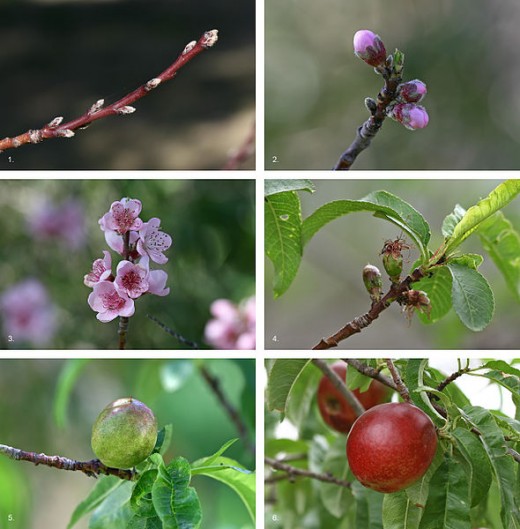
The above image is the developmental sequence of a nectarine over a 7 1/2-month period, from bud formation in early winter to fruit ripening in midsummer.
© 2011 Elsie Hagley

